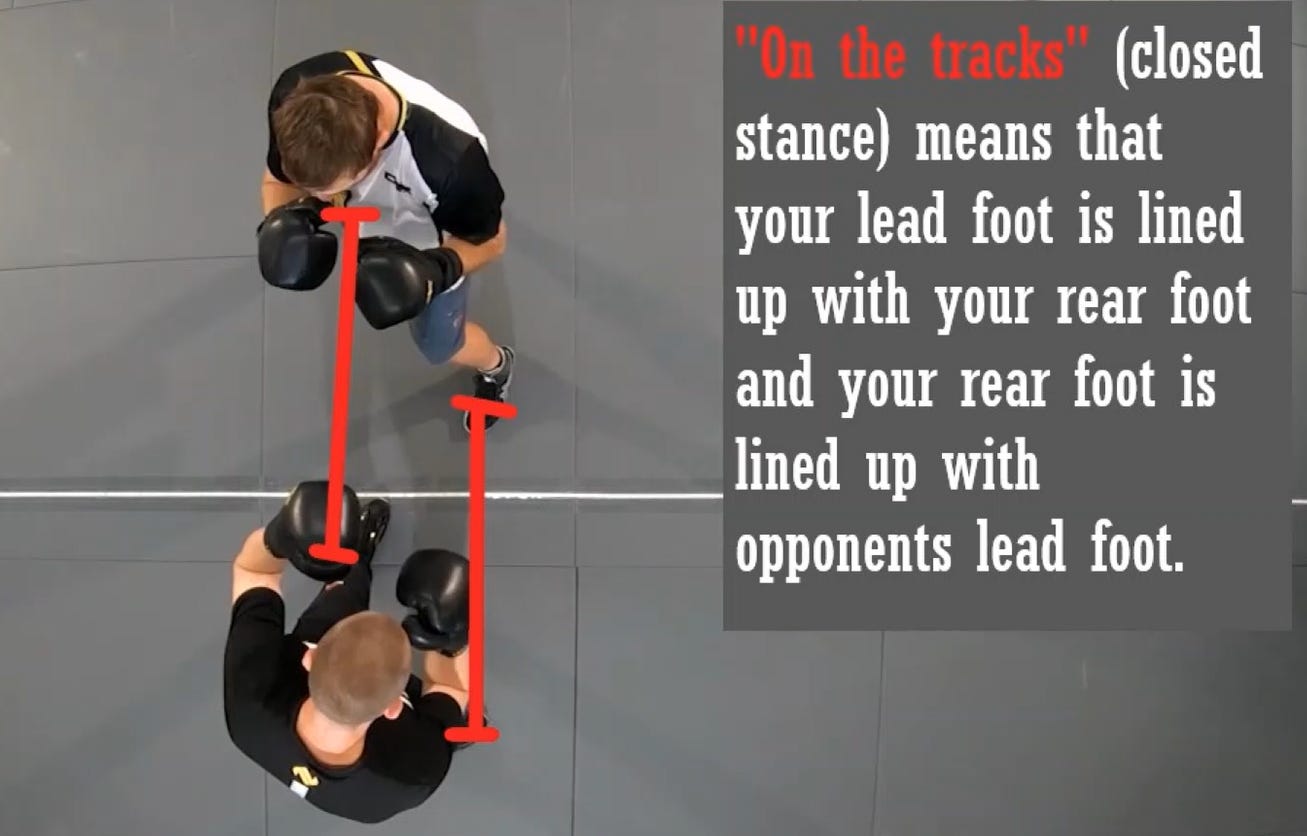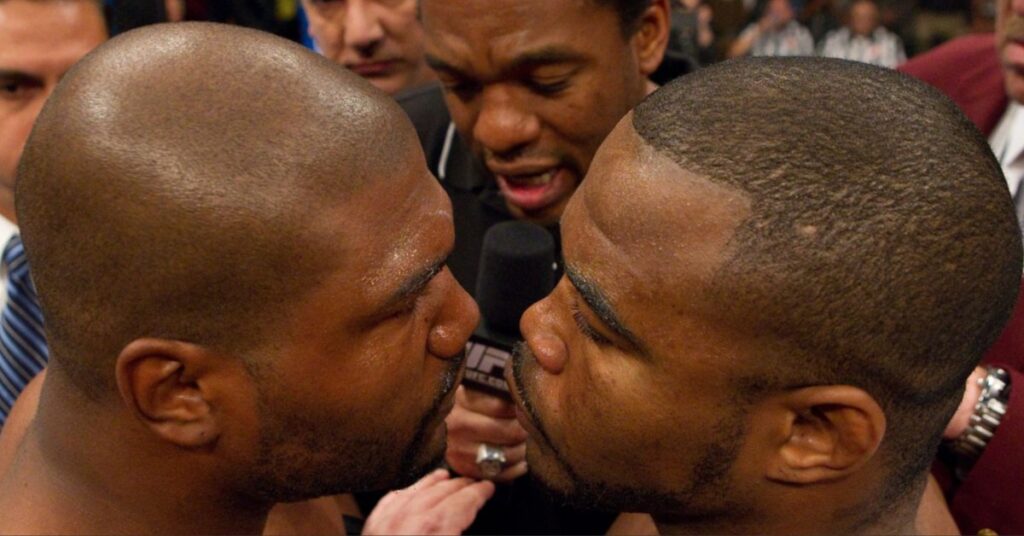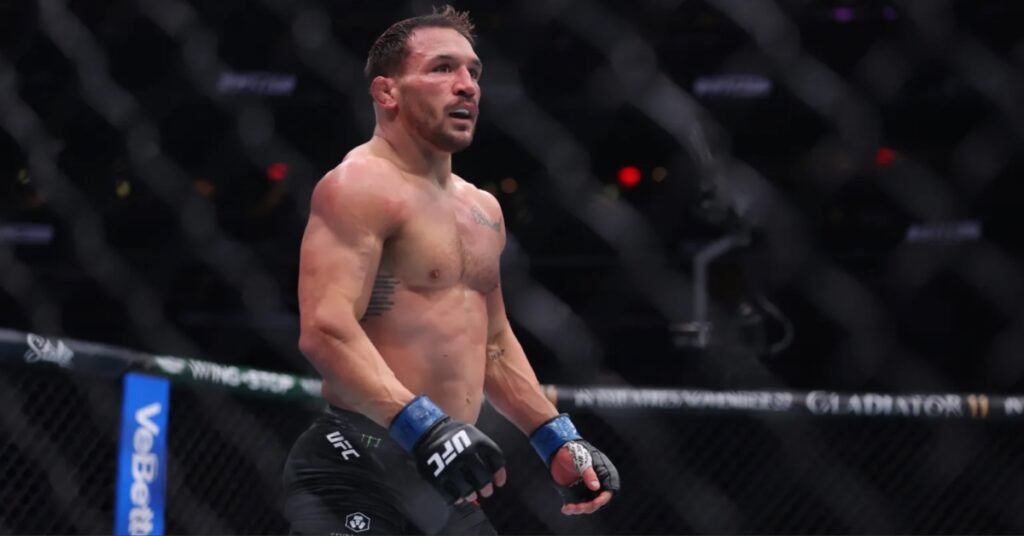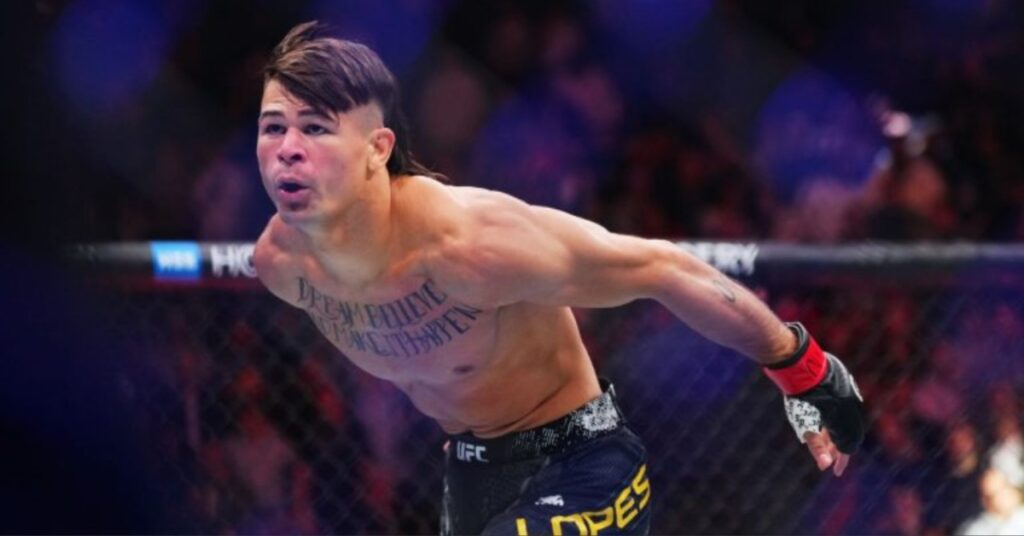Tip Sheet: Positions in Striking – Small guide to help people understand the chaotic nature of striking

Striking is the range of combat where neither fighter has much control of their opponent. They have to rely on distance and positions. All the positions described above occur in every fight, and being able to see and recognize these positions during fights can make watching fights more interesting. The following is a helpful breakdown of striking positions with the film scout Phantom Punch Breakdowns.
Distance
Distance is the space between the fighter and their opponent.
There are 2 distances used in Striking MMA- “Boarders” and the “Pocket”.
Boarders
Boarders (a term coined by Fight Ready MMA) is the distance where if both fighters extend lead hands, then they will be able to touch knuckle to knuckle. This is the extended distance necessary in MMA since takedowns are a factor. It’s called boarders since it’s one step away from either fighter being able to low kick, thus the fighter has to determine when cross the “boarder”.

“Boarders” is the striking range where it only takes one step to low kick the lead leg.
Boarders is the distance where entries occur in MMA and the optimal distance for feinting. Feints are used for getting reactions from the opponent and for a fighter to read those reactions they need to be far enough to see the reactions, but close enough to make the feint enough of a threat for the opponent to react.
Brad Riddell in the video above recommends feinting from a distance just outside of boarders. So when the fake or feint is executed the fighter lands at boarders where they have enough time to make reads.
The pocket is the striking fight zone. This is the distance in a fight where both fighters can hit each other. Any strike or takedown attempt is available here and its very dangerous to hang around in this distance without the proper mechanics and understanding of the three “angles” from this distance.

“Pocket” is the range where all punches are available.
Pocket Angles
There are three angles within the pocket: on the tracks, on the fence, squared up.
“On the fence” means the fighter’s lead foot is lined up with their opponent’s lead foot. The one that achieves this position forces the opponent to turn towards them.

“Squared up,” in striking, means the fighter has their lead foot pointed towards the opponents crotch. The opponent is extremely off balanced from this position since they are square in relation to the fighter.

“Squared off” and “On the fence” are two angles that are mainly used for exiting a striking exchange. Slipping doesn’t normally occur in these positions since the opponent has to readjust their position in order to face the fighter.
“On the tracks” is the angle where slipping occurs in the pocket. This is the angle where both fighters are facing each other. In terms of foot position, in a closed stance matchup, the fighter’s lead foot is lined up with the opponent’s rear foot and the rear foot is lined up with the opponent’s lead foot. In an open stance matchup, the fighter’s lead foot is lined up with the opponent’s lead foot and the rear foot is lined up with the opponent’s rear foot. There are two different positions from this angle: Rear foot position and the lead foot position.

Positions “On The Tracks”
When a fan sees a fighter transitions their weight from the lead foot to rear foot and vice versa, they refer to it as slips and head movement. The reality is much more simple, slips refer to the transition between the lead foot position and the rear foot position. When the head, knee, and ankle are aligned, that is where the weight is placed and the end of the weight transition.

Weight on the lead foot

Weight on the rear foot
When weight is on the lead foot the lead side hand becomes the power hand and the rear hand becomes the controlling or feinting hand.
When weight is on the rear foot the rear side hand becomes the power hand and the lead hand becomes the controlling or feinting hand.






